COOK, James, Capt. (1728–1779). [Collected Voyages]. London: W. Strahan; and T. Cadell, 1773, 1777, 1784. Together 3 works in 8 volumes, 4to (286 x 228 mm). FIRST VOYAGE: 52 engraved maps, charts and plates; mostly folding, including the large “Straits of Magellan” map. SECOND VOYAGE: Engraved frontispiece portrait by J. Basire after William Hodges; 63 plates and maps (most double page or folding). THIRD VOYAGE: 24 engraved maps and charts (mostly folding), folding letterpress table, without 63 of the plates that were “cautioned” by the publisher to booksellers not to have them bound up but instead issue in a separate volume in folio (not present); also without the “Death of Cook” plate that was later issued but is sometimes seen bound in into the Third Voyage. (Some folding plates with offsetting, also with offsetting to text from plates, occasional spotting or browning at margins of plates). Full early dark calf, covers tooled and framed in blind, spines in 6 compartments with 5 raised bands, orange and brown morocco lettering–pieces gilt in two compartments, remainder blind tooled in a geometric semé pattern, all edges marbled, dentelles in blind, marbled endpapers (few volumes with professional reinforcement to lower joints near foot, general light rubbing to covers, else fine). A COMPLETE SET OF THE FIRST EDITIONS OF COOK’S VOYAGES. FIRST VOYAGE, 1768–1771: With the map of the Straits of Magellan, not generally issued with the first edition of the same year but without Hawkesworth’s Preface to the second edition and only a single line of errata at foot (recto) of the directions for placing the cuts leaf. Volume I contains the voyages of Byron, Carteret and Wallis, with the discovery of Tahiti, and volume II–III contain John Hawkesworth’s (1715?–1773) edited account of Lieutenant Cook’s voyage. Cook’s instructions for this first voyage were to observe the transit of Venus from Tahiti to determine the earth’s distance from the sun and to carry on John Byron’s survey and examination of the seas between Cape Horn and New Holland, but they did not extend to searching for Terra Australis. He did, however, add more than 5,000 miles of coastline to Admiralty charts for Tahiti, Australia and the Great Barrier Reef, and New Zealand, which he circumnavigated. This success led the Admiralty to send him on a second expedition. SECOND VOYAGE, 1772–1775: Cook’s instructions were to circumnavigate the globe as far south as possible to search for any southern continent. He fully proved there was no “Terra Australis” but remained convinced of a land mass beyond the ice fields and became the first to cross the Antarctic Circle. He further charted Australia, revealing the first evidence of a strait separating it from Tasmania, and New Zealand, and re-discovered Easter Island, the Marquesas, Niue, Tonga, the New Hebrides, New Caledonia, Norfolk Island, and South Georgia. As importantly, he proved the value of the marine chronometer in determining longitude and found a means of preventing scurvy by always having fresh vegetables and fruit on board. Cook lost only one man to disease (not being scurvy) which was a unique achievement in his time. With him were the Forsters (the father and son botanists), Sparrman, and others including Omai, a Polynesian native taken aboard by Cook who was later lionized by London society upon their return. Among the official accounts of Cook’s three voyages, this is the only one actually written by Cook himself. Volume I contains the frontispiece portrait of Cook by William Hodges (1744–1797) that is “one of the most famous images of the great navigator” (Rosove). THIRD VOYAGE, 1770–1780: Cook was ordered to seek a North–West Passage and to return Omai to Tahiti. From Cape Horn they sailed to the Kerguelens (named Desolation Island by Cook), Tasmania, and New Zealand, charting and mapping all the way, then north, discovering the Hawaiian Islands (which Cook considered his most valuable discover) and Christmas Isl
COOK, James, Capt. (1728–1779). [Collected Voyages]. London: W. Strahan; and T. Cadell, 1773, 1777, 1784. Together 3 works in 8 volumes, 4to (286 x 228 mm). FIRST VOYAGE: 52 engraved maps, charts and plates; mostly folding, including the large “Straits of Magellan” map. SECOND VOYAGE: Engraved frontispiece portrait by J. Basire after William Hodges; 63 plates and maps (most double page or folding). THIRD VOYAGE: 24 engraved maps and charts (mostly folding), folding letterpress table, without 63 of the plates that were “cautioned” by the publisher to booksellers not to have them bound up but instead issue in a separate volume in folio (not present); also without the “Death of Cook” plate that was later issued but is sometimes seen bound in into the Third Voyage. (Some folding plates with offsetting, also with offsetting to text from plates, occasional spotting or browning at margins of plates). Full early dark calf, covers tooled and framed in blind, spines in 6 compartments with 5 raised bands, orange and brown morocco lettering–pieces gilt in two compartments, remainder blind tooled in a geometric semé pattern, all edges marbled, dentelles in blind, marbled endpapers (few volumes with professional reinforcement to lower joints near foot, general light rubbing to covers, else fine). A COMPLETE SET OF THE FIRST EDITIONS OF COOK’S VOYAGES. FIRST VOYAGE, 1768–1771: With the map of the Straits of Magellan, not generally issued with the first edition of the same year but without Hawkesworth’s Preface to the second edition and only a single line of errata at foot (recto) of the directions for placing the cuts leaf. Volume I contains the voyages of Byron, Carteret and Wallis, with the discovery of Tahiti, and volume II–III contain John Hawkesworth’s (1715?–1773) edited account of Lieutenant Cook’s voyage. Cook’s instructions for this first voyage were to observe the transit of Venus from Tahiti to determine the earth’s distance from the sun and to carry on John Byron’s survey and examination of the seas between Cape Horn and New Holland, but they did not extend to searching for Terra Australis. He did, however, add more than 5,000 miles of coastline to Admiralty charts for Tahiti, Australia and the Great Barrier Reef, and New Zealand, which he circumnavigated. This success led the Admiralty to send him on a second expedition. SECOND VOYAGE, 1772–1775: Cook’s instructions were to circumnavigate the globe as far south as possible to search for any southern continent. He fully proved there was no “Terra Australis” but remained convinced of a land mass beyond the ice fields and became the first to cross the Antarctic Circle. He further charted Australia, revealing the first evidence of a strait separating it from Tasmania, and New Zealand, and re-discovered Easter Island, the Marquesas, Niue, Tonga, the New Hebrides, New Caledonia, Norfolk Island, and South Georgia. As importantly, he proved the value of the marine chronometer in determining longitude and found a means of preventing scurvy by always having fresh vegetables and fruit on board. Cook lost only one man to disease (not being scurvy) which was a unique achievement in his time. With him were the Forsters (the father and son botanists), Sparrman, and others including Omai, a Polynesian native taken aboard by Cook who was later lionized by London society upon their return. Among the official accounts of Cook’s three voyages, this is the only one actually written by Cook himself. Volume I contains the frontispiece portrait of Cook by William Hodges (1744–1797) that is “one of the most famous images of the great navigator” (Rosove). THIRD VOYAGE, 1770–1780: Cook was ordered to seek a North–West Passage and to return Omai to Tahiti. From Cape Horn they sailed to the Kerguelens (named Desolation Island by Cook), Tasmania, and New Zealand, charting and mapping all the way, then north, discovering the Hawaiian Islands (which Cook considered his most valuable discover) and Christmas Isl
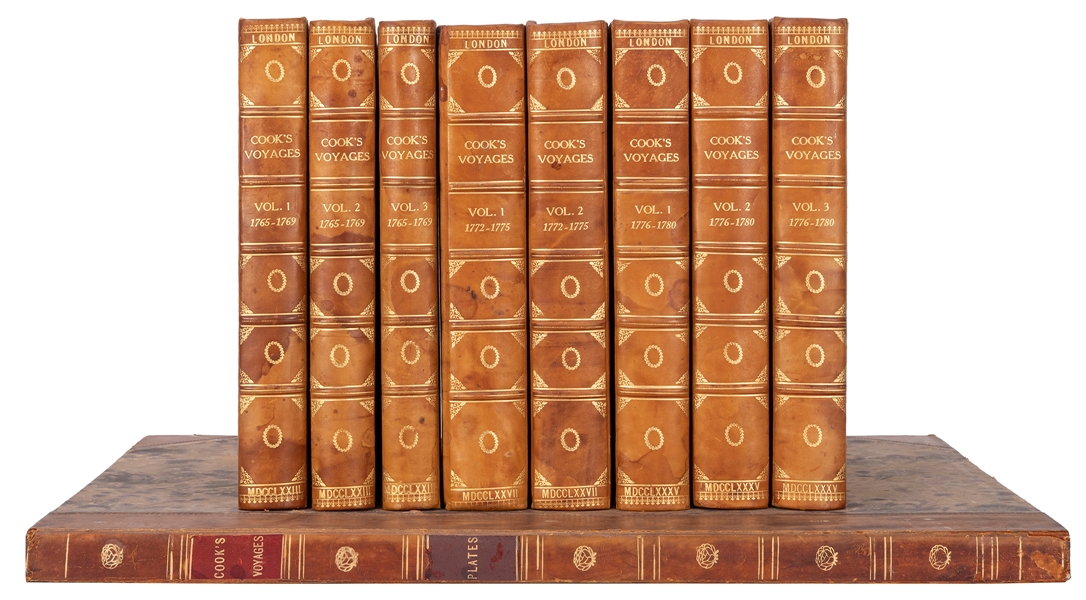

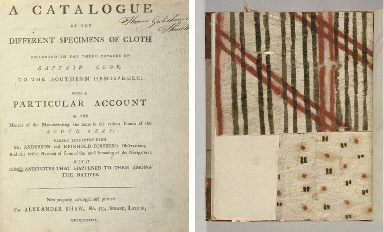



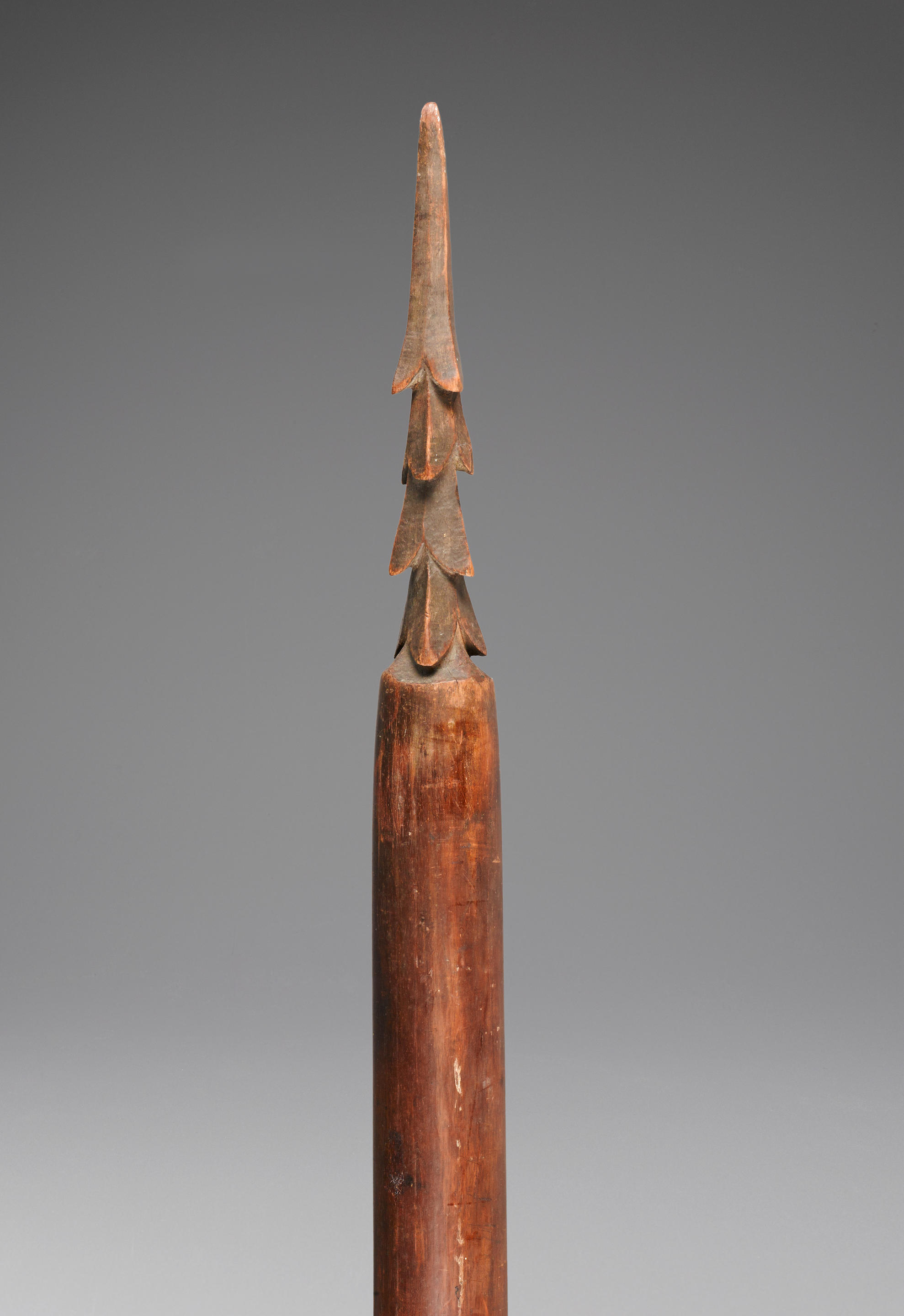
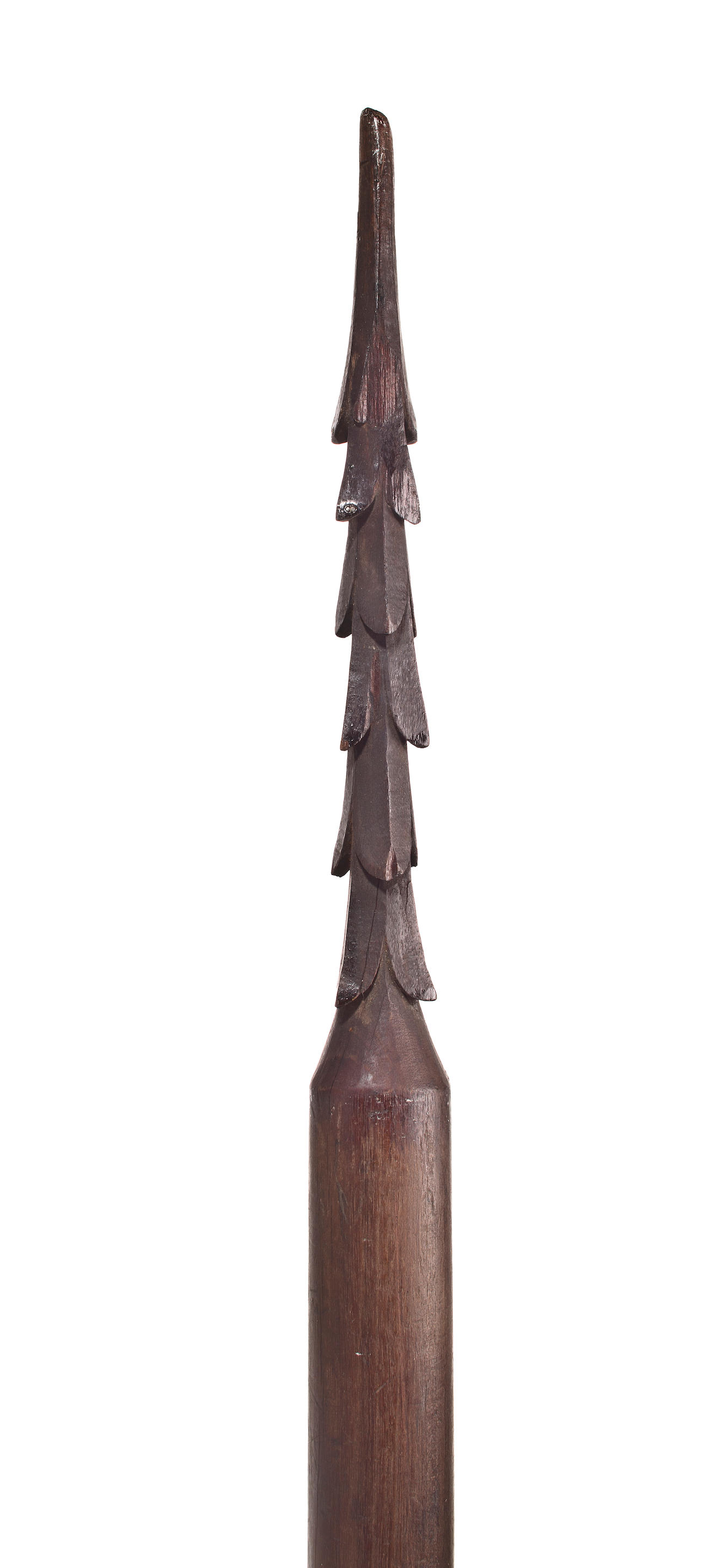


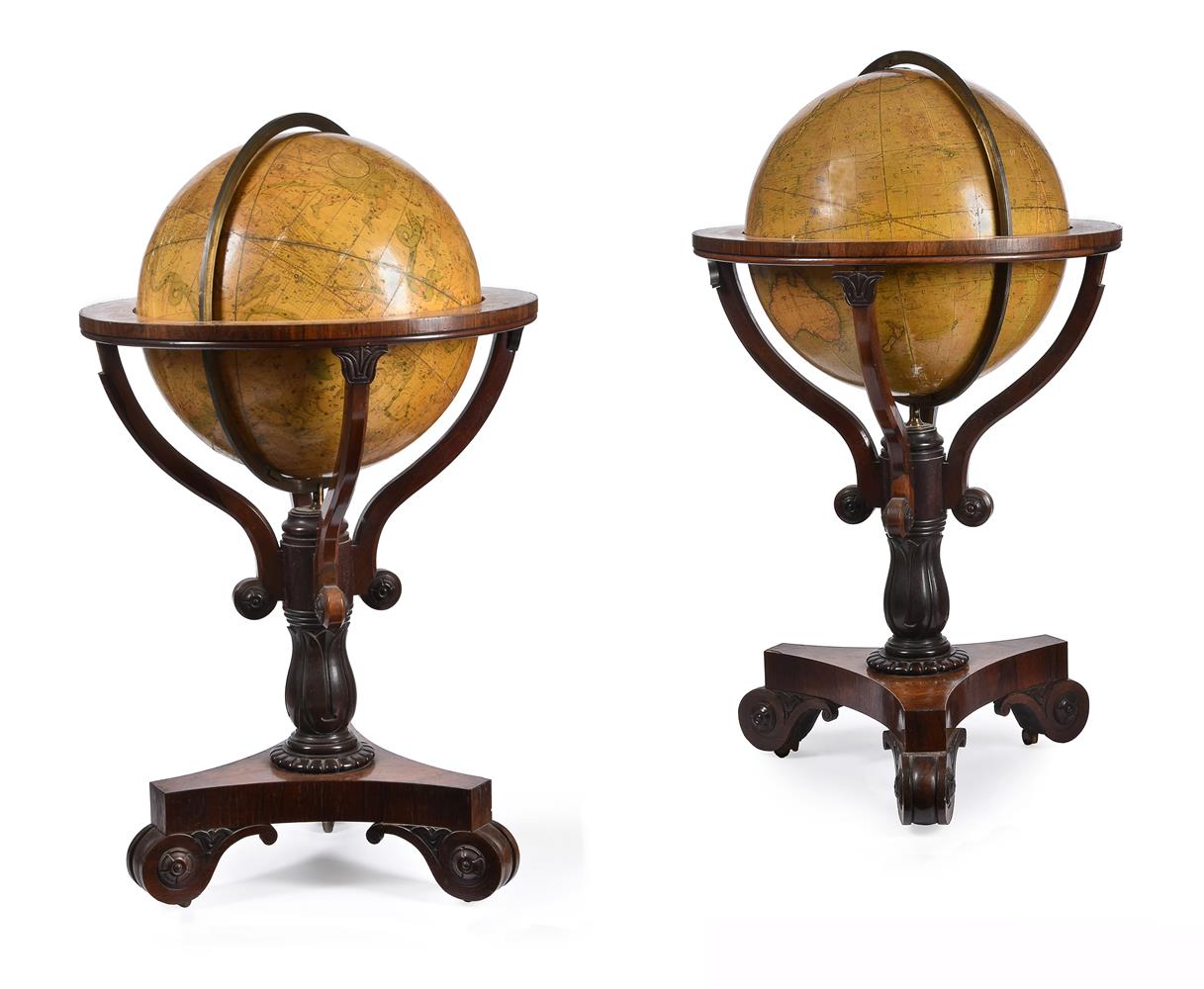
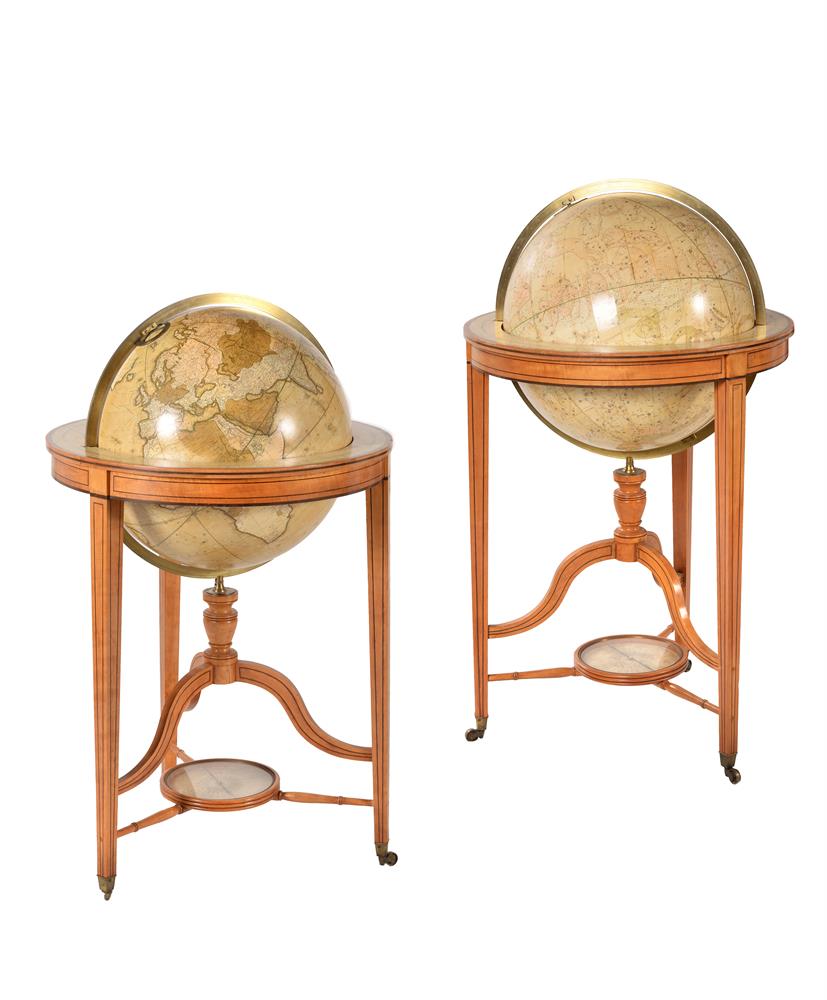
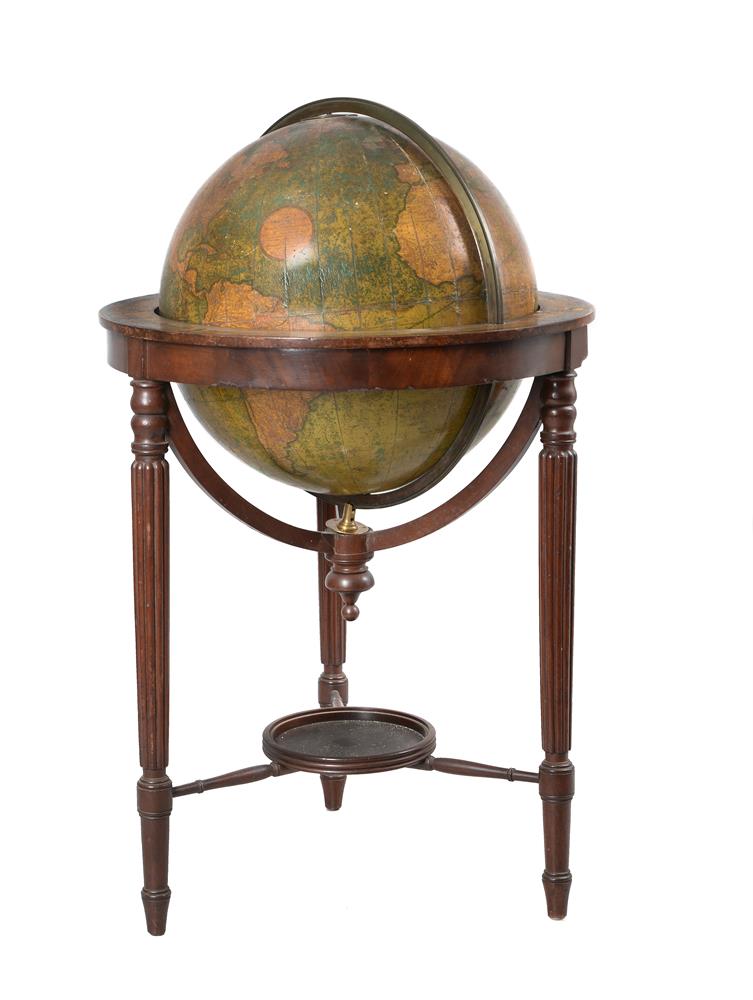
Try LotSearch and its premium features for 7 days - without any costs!
Be notified automatically about new items in upcoming auctions.
Create an alert